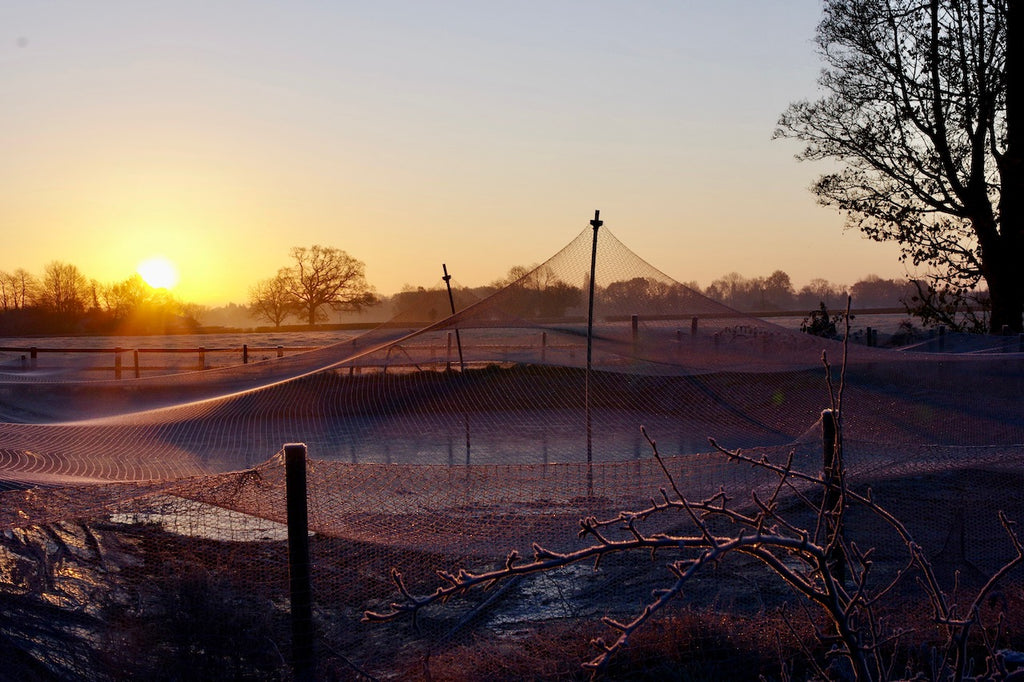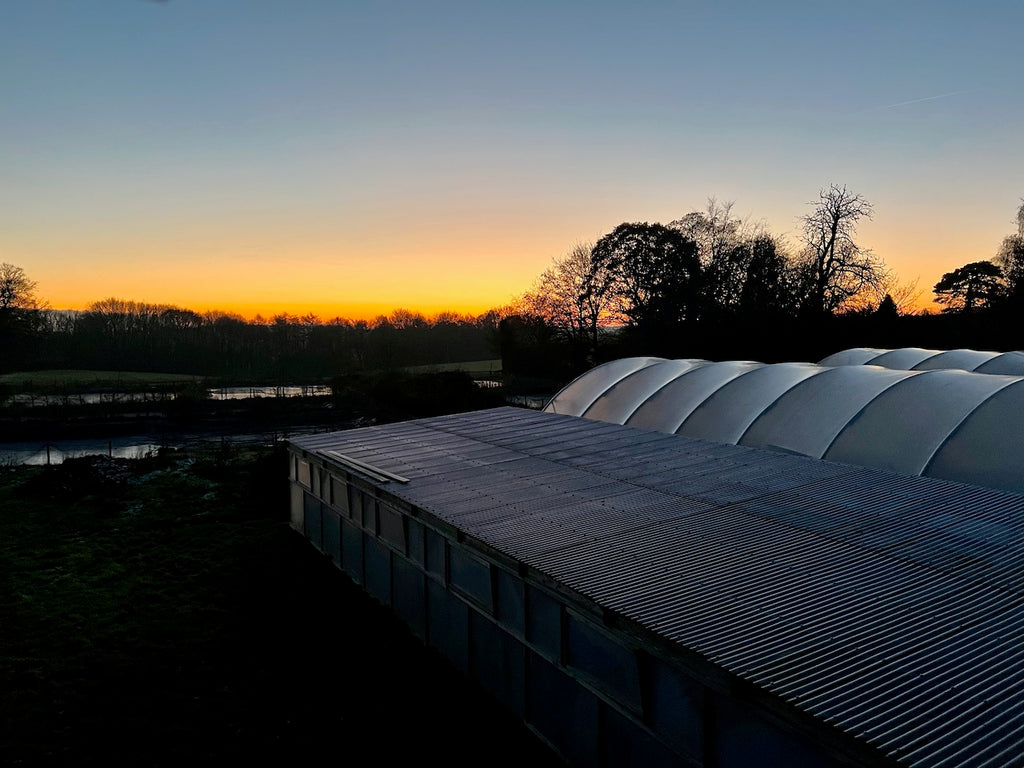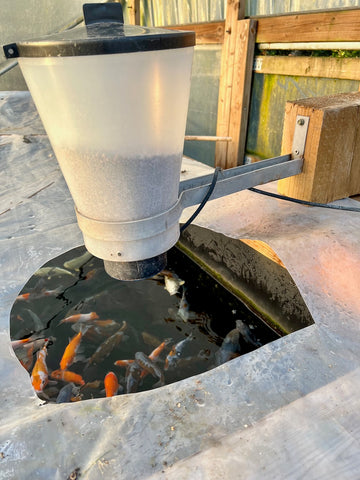Koi keeping in freezing cold winter and summer heat waves, December 2022
So often these days the weather we experience is an extreme of one form or another, and we're in one of those now with far colder temperatures that normal for this time of year. We're in a deep freeze!
Daytime temperatures around 0 Celsius, and nighttime temperatures dropping to -5C and possibly a little under. They can hit -10C and we've had them as low as -15C in the past.
Earlier this year, we experienced an extended heat wave with 30C plus temperatures.
Extreme temperatures is one of the koi topics we often get asked about, and the answers are not always what people expect. And being in the deep freeze right now, I thought it worth while jotting a few thoughts down and sharing them with you. If you have any questions on how to keep your koi safe through periods of extreme temperatures, feel free to contact us here: https://www.byerkoifarm.co.uk/pages/contact-us
Back to my brain dump. I'll break it down to koi husbandry, and equipment.
On the koi husbandry side of things, one of the best attributes of koi is their ability to tolerate a very wide range of temperatures. They thrive in mid teens C through to early 20's C, but can tolerate very low temperatures and for short periods, temperatures in the 30's C too. This makes them a great option for UK ponds, and also one of the reasons why interest in them extends around much of the world with all the varying climates that exist; except for perhaps the polar regions!
We find very high temperatures much more of a husbandry headache than very low temperatures. I don't have a problem with koi in a pond of a few degrees C, as long as the pond is well maintained and the koi head into the winter in good health. This is much less risky for koi than in 30C water where low oxygen become a tricky husbandry issue and high stocking densities can easily be punished. Colour quality is at risk, and particularly with beni, there is a real risk of colour loss. Ammonia becomes more toxic to koi the warmer the water and so this is something else that needs to be monitored and managed if necessary. Good water quality is what we're aiming at all the time for good koi husbandry and happy koi, so for example, when water temperatures get close to 30C we will often reduce feeding or even stop feeding to help maintain good water quality.
At very low temperatures, water has a much greater carrying capacity for oxygen so that even if a pond freezes over for a short period, the koi are at more immediate risk from the build up of waste gases from degrading organic matter than from a shortage of oxygen. And anyway, a small area kept clear of ice, and some water flow, is all that's needed to enable sufficient gas exchange.
Sure, extended periods of cold like we can get in the UK can be a marathon for koi but as long as they are in good health going into the winter and good husbandry is maintained throughout the winter, then we find the risks can be more easily managed than in extreme heat.
Equipment is another matter. Extreme heat and cold takes some equipment to the edges of their tolerances. We run many ponds in polytunnels with air temperatures in the summer often in the 30's, and in head waves it rises to 45 C and over! This pushes water pumps and air pumps to their limits, and particularly with pond pumps we tend to see a higher number of failures in these conditions and this is when you can get most heavily punished, because the water is warm, and holds a low amount of oxygen and ammonia is more toxic too. So, the amount of time you have to spot and deal with an issue before koi become stressed or even worse is quite short compared to extreme cold periods where the tolerances are wider.
Frozen pipes is the one to watch for in extreme cold, and in a pump fed system this can have dire impacts.
So, in summary we advice to check your pond and koi more often in extreme weather conditions, whether it be the big freeze like we're experiencing now or the heat waves like we have been experiencing in recent summers.
Visual checks on equipment should be done morning and night.
Here's sunrise this weekend at Byer Koi Farm:


And, still at sunrise but looking west, the moon was still well above the horizon:

And, sunset :

In freezing conditions, water quality is less likely to become a problem so stick with a normal routine for ammonia and nitrite tests. Water changes should continue through the winter at 10% per week. Koi behaviour is best checked in the warmest part of the day.
We run growing on systems over the winter which are heated, and so we cover them in the coldest weeks to help retain heat. That's what we've spent this weekend doing...


In extreme heat, water quality tests frequency should be increased and depending on the level of water movement you have as standard, it's worth considering adding additional water movement by adding air stones or other oxygenating mechanisms like water falls. And if the water temperature exceeds 30C, we'd suggested cutting feeding down significantly or even all together for the short period these very high water temperatures are likely to be around for.
Right now, in the UK we have this big freeze which the weather forecasters say will continue until just before Christmas. It's not always comfortable checking on equipment in early morning and evening when it's -5C or -10C, but we'd suggest to get a few extra layers on and a wooly hat and get out there and check on your pond and those precious koi.





